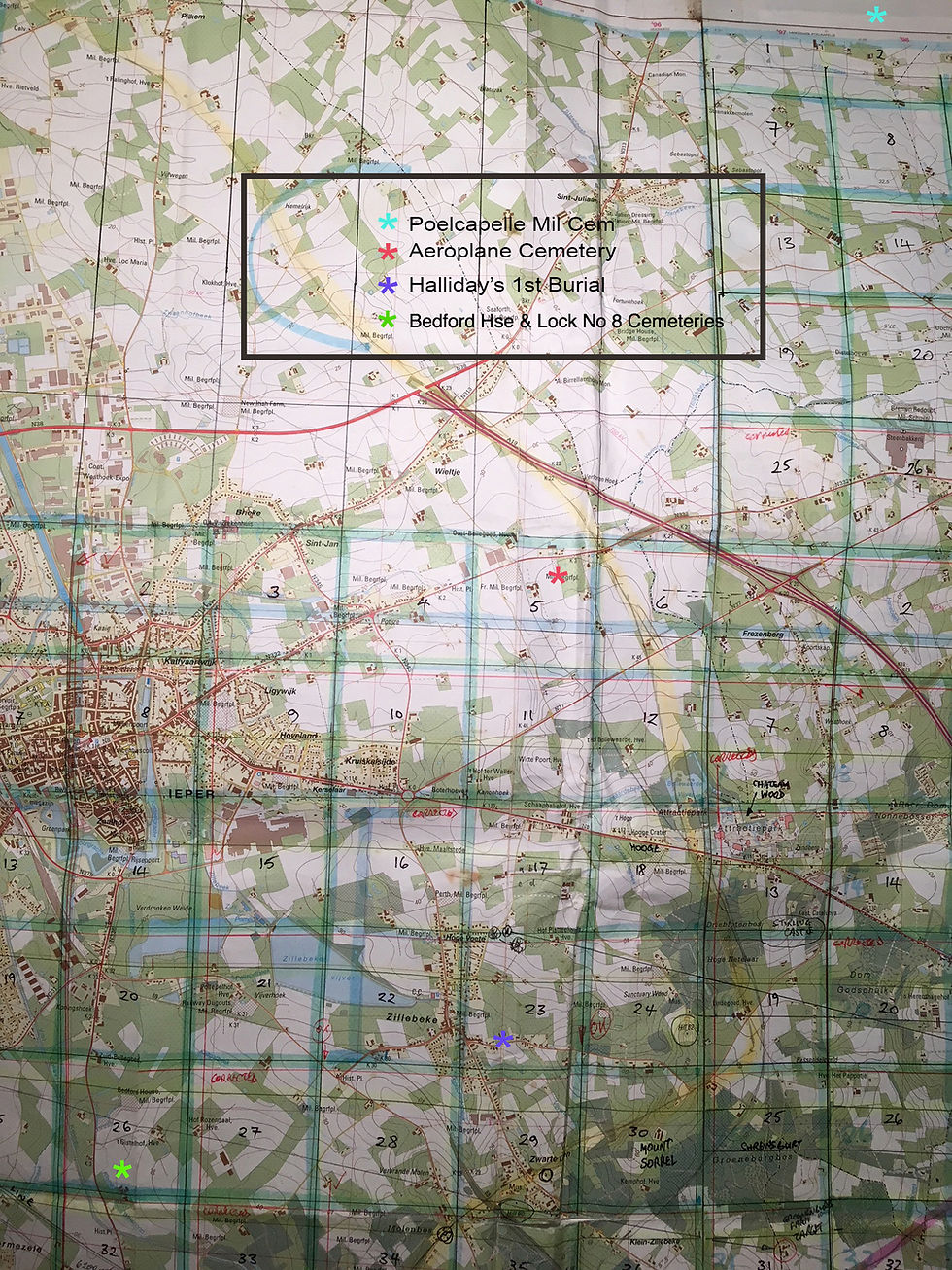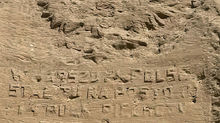Burial Conundrum Solved after 100 Years
- Steve Buster Johnson
- Nov 6, 2017
- 3 min read
Updated: Jul 10
On the first day of the Battle of Messines, 7th June 1917, 6 Squadron experienced the highest number of flying casualties for any single day of the First World War, a statistic not to be equalled in the 103 years since the squadron was formed. Over a few short hours, four men were killed, three were injured and one was taken prisoner of war. The crew of one of the aircraft lost that day (RE8 Serial No A3214) were reported as 'Killed in Action', though their bodies were never returned to the Squadron for burial at Lijssenhoek Military Cemetery, as was customary for 6 Squadron. Instead, the final resting place of Sergeant Louis Gray (pilot) was the Aeroplane Cemetery on the road between Ypres and Zonnebeke and that of 2nd Lt Morrice Halliday (Gray's observer) several kilometres to the north at the Poelcappelle Military Cemetery, both cemeteries situated a long way from the site of the crash in German-held territory near Hill 60. With the help of CWGC's recent release of a large number of grave registration documents and other official records, I can now reveal exactly what happened to the two airmen.
Sometime after the RE8 of Sergeant Gray and Lieutenant Halliday was brought down in flames by German anti-aircraft fire and crashed on enemy territory in the vicinity of Hill 60, the bodies of the two men were retrieved by the allies and their aircraft destroyed by shellfire to prevent it falling into enemy hands. At that time, Lt Halliday's body was unable to be identified and he was buried in a makeshift graveyard by the side of the road leading to Sanctuary Wood just to the east of the village of Zillebeke (Map Grid Ref: 28.I.23.c.85.60), along with the bodies of six soldiers. Only one of the soldiers was identified and none of the graves bore headstones. It is unclear where Sergeant Gray was buried, though it would have been close to the village of Zillebeke and in a makeshift graveyard (see notes below). With some 26,000 allied casualties sustained during the first day of the Battle of Messines, little priority would have been given to the organisation of burying the dead.
The bodies of the two men remained undisturbed until after the war, when the Imperial War Graves Commission determined that the remains of the fallen should not be repatriated to the UK but instead honoured where they fell, but in properly designed cemeteries with standardised headstones, no matter the rank of the serviceman. A department was formed in the name of 'Concentration of Graves (Exhumation and Reburials)', whose task was to exhume the remains from informal roadside burial grounds and small cemeteries and rebury them in existing or newly-created cemeteries, each burial marked with a headstone. In addition, every effort would be taken to identify those bodies initially designated as an 'Unknown Soldier'.
In accordance with the new directive, on the 14th June 1920, the bodies of sixteen British soldiers (9 ‘unknown’ and 7 identified) as well as 1 Royal Flying Corps sergeant were exhumed from a number of small burial grounds around Zillebeke and reburied collectively in the Aeroplane Cemetery, located just to the north-east of Ypres on the N332 road to Zonnebeke (Map Grid Ref: 28.I.05.b.2.8). Sergeant Louis Gray was identified as the Royal Flying Corps sergeant. At the same time, twenty bodies from the Bedford House Cemetery (Enclosure No 5) and twenty-three from the Lock 8 Cemetery (Map Grid Ref: 28.I.26.c - approximately 2.5 kilometres south-west of Zillebeke) were also exhumed and concentrated into the Aeroplane Cemetery. Three years later, on the 31st October 1923, the bodies of the servicemen buried with 2nd Lt Morrice Halliday at the informal cemetery 500 metres east of Zillebeke, were exhumed, along with 2nd Lt Halliday, and taken to the cemetery at Poelkapelle. After further investigations, the identities of four of the seven bodies were determined, including that of Lt Mortice Halliday, and the men were re-buried with appropriately carved headstones.
The mystery has been solved.














































Comments